Black bears, also known as American black bears, are the world’s most common bear species. Their name is no trick, these bears are black colored, with lighter colored muzzles. Black bears and brown bears are the only two bear species not threatened with extinction. This species has an incredibly large distribution, and healthy overall population. Read on to learn about the black bear.
Description of the Black Bear
Black bears are, you guessed it, black! They have black colored fur, and lighter brown colored muzzles with black noses and a black stripe up the top of the muzzle. They have round ears perched on broad heads. The muzzle tapers in, and is quite narrow compared to the large skull. Adult males stand up to 8 ft. tall, but the average is closer to 4.5 ft. long. Males weigh 126 – 551 lbs. on average, and females weigh 90 – 375 lbs. on average.
Interesting Facts About the Black Bear
Black bears are apex predators, with a wide variety of interesting behaviors and adaptations. These common bears frequently share ranges with humans — learn more about why you should respect these bears rather than revile them.
- A Bear Apart – Black bears might share North America with brown bears and even polar bears, but they are not closely related. In fact, the most recent ancestor that the three shared lived over five million years ago! That’s a lot of time for animals to divide genetically.
- Black Bears and Brown Bears – There are a few ways to tell the difference between black bears and brown bears. The first is the most obvious, the color. Most black bears are black, and most brown bears are brown, but this isn’t always the case. Their heads also provide the next differentiation. Black bears have very broad, rounded skulls. Brown bears have more narrow skulls, with flatter foreheads. Usually, black bears are also smaller than brown bears.
- Claw-Work – Black bear claws, and paws, also help differentiate between the two species. Black bears have smaller paws, with smaller claws. They can use their paws to manipulate objects, and are incredibly efficient. Black bears can open screw-top jars, and open door handles, allowing them to wreak havoc with your campsite!
- Brainpower – The ability to open jars and doors is not simply because they are good with their paws. Black bears are incredibly intelligent as well. Researchers have conducted a number of different behavioral experiments on the intelligence of black bears. These large mammals are capable of color discrimination at a faster rate than chimpanzees, and can also tell the difference between shapes at a similar rate.
Habitat of the Black Bear
Scientists recognize sixteen different subspecies of black bears, which occupy a wide variety of habitats. Most habitats share a few characteristics that allow these bears to thrive. Thick vegetation, and difficult-to-access terrain keeps these bears safe, and is one reason they prefer living in areas isolated from human interruption.
Despite this, they will roam into more urban areas to forage. This behavior occurs especially frequently when their habitats are scarce in acorns, tree nuts, and berries. People have found them in juniper woods, chaparral, oak forests, hickory forests, bays, swamps, flatwoods, hardwood forests, meadows, and more.
Distribution of the Black Bear
In the past, these bears lived across the vast majority of North America, particularly in heavily forested areas. Nowadays, humans have restricted their range to the northernmost reaches of their range, and patchy distribution in less-inhabited regions of the United States.
Most of their range in Canada is consistent with their historic range, but in the United States they live in just the Northeast, and much of the Appalachian Mountains. Patchy populations are present in the Southeast, Mexico, and other forested areas.
Diet of the Black Bear
These bears are omnivores, which means that they will eat both plant and animal matter. Depending on the season, and the age of the bear, these creatures will eat up to 85% vegetation. The most animal-based diet occurs immediately after they emerge from hibernation. During this period they will hunt young deer, elk, and other hoofed animals, or feed on carrion.
These bears consume a wide variety of plants throughout the year, including roots, grasses, flowers, budding plants, berries, and other fruits, nuts, and seeds. Much of their protein comes from insects, and they will eat bees, honey, ants, larvae, and yellow jackets.
The Sixteen Subspecies
| Scientific Name | Nickname | Range |
| U. a. altifrontalis | Olympic Black Bear | Pacific Northwest |
| U. a. vancouveri | Vancouver Island Black Bear | Vancouver Island |
| U. a. amblyceps | New Mexico Black Bear | Colorado to Mexico |
| U. a. pugnax | Dall Black Bear | Alexander Archipelago Alaska |
| U. a. americanus | Eastern Black Bear | Montana to the East Coast of the United States, north into Canada |
| U. a. perniger | Kenai Black Bear | Kenai Peninsula |
| U. a. californiensis | California Black Bear | Oregon to southern California |
| U. a. machetes | West Mexican Black Bear | Mexico |
| U. a. carlottae | Queen Charlotte Islands Black Bear | Queen Charlotte Islands and Alaska |
| U. a. luteolus | Louisiana Black Bear | Texas, Louisiana, Mississippi |
| U. a. cinnamomum | Cinnamon Bear | Oregon through Utah, has red-brown fur |
| U. a. kermodei | Spirit Bear | British Columbia |
| U. a. emmonsii | Glacier Bear | Southeast Alaska |
| U. a. hamiltoni | Newfoundland Black Bear | Newfoundland |
| U. a. eremicus | East Mexican Black Bear | Mexico |
| U. a. floridanus | Florida Black Bear | Alabama through Florida |
Black Bear and Human Interaction
Black bears are much less aggressive than their brown counterparts. They will make more aggressive displays, like mock charges, and attacks are less likely to result in a fatality than brown bears. Most attacks occur in areas where bears are fed, or have become used to human interaction.
The bears will also feed on crops, like corn, apples, and oats. Conversely, humans have caused harm to bears for centuries. Hunting of black bears has been actively conducted since before European settlers arrived on North America.
A number of U.S. States and Canadian Provinces have hunting seasons for black bears. The population of most subspecies is stable, and hunting is used to control population growth.
Domestication
Humans have not domesticated black bears in any way.
Does the Black Bear Make a Good Pet
No, black bears do not make good pets. While they are not as aggressive as brown bears, they are still apex predators. An angry black bear can definitely kill you when aggravated. It is highly illegal to own a black bear as a pet for this reason.
Black Bear Care
In zoos, black bears must be kept in secure enclosures for the safety of the public, zookeepers, and other animals. They have large areas to exercise and interact with one another, and most enclosures also have some type of water source to swim in.
These intelligent creatures must have a wide variety of environmental enrichment, from toys to puzzle feeders, and whole carcasses for natural foraging. Their diet consists of a wide variety of fruits and vegetables, with commercial carnivore meat, or some other protein source provided at the direction of a veterinarian.
Behavior of the Black Bear
The behavior of these predators can vary greatly based upon where they live. In regions with higher human populations, most bears are exclusively nocturnal; while in areas with fewer people, they are diurnal.
These bears are usually territorial, and do not socialize in groups for any extended period of time. However, they will tolerate one another at a prolific food source, such as a salmon run. In these types of situations the biggest bears get the best feeding locations. They are particularly good at swimming, and can catch fish while doing so.
Reproduction of the Black Bear
A female will have her first litter when she is between three and five years old. The bears will mate in June or July, but the embryo does not begin developing until November. This allows the cubs to be born in January or early February. The cubs will not open their eyes for about a month, and will nurse for nearly seven months. At approximately a year and a half, they are fully independent, but are not fully grown until five years old.

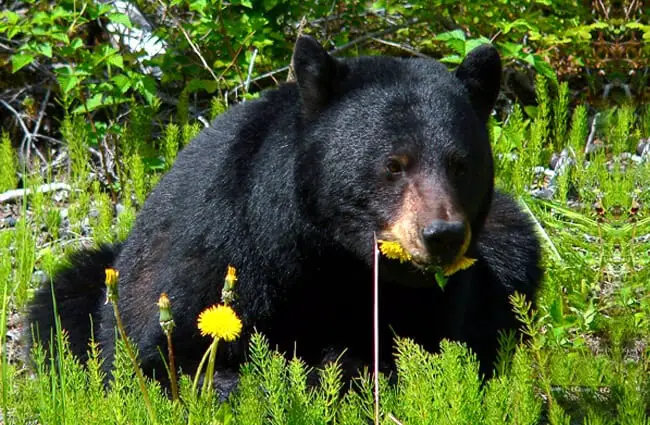



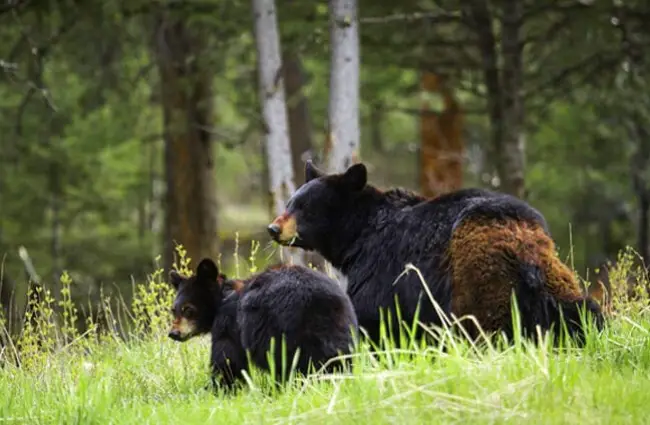
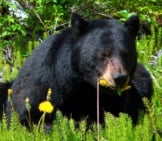
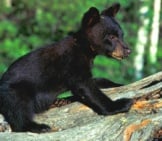
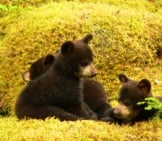
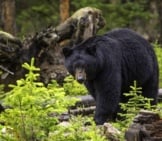
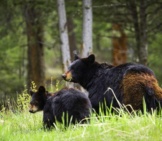
![Red Angus Closeup of a beautiful Red Angus cowPhoto by: U.S. Department of Agriculture [pubic domain]https://creativecommons.org/licenses/by/2.0/](https://animals.net/wp-content/uploads/2020/03/Red-Angus-4-238x178.jpg)












![Red Angus Closeup of a beautiful Red Angus cowPhoto by: U.S. Department of Agriculture [pubic domain]https://creativecommons.org/licenses/by/2.0/](https://animals.net/wp-content/uploads/2020/03/Red-Angus-4-100x75.jpg)

